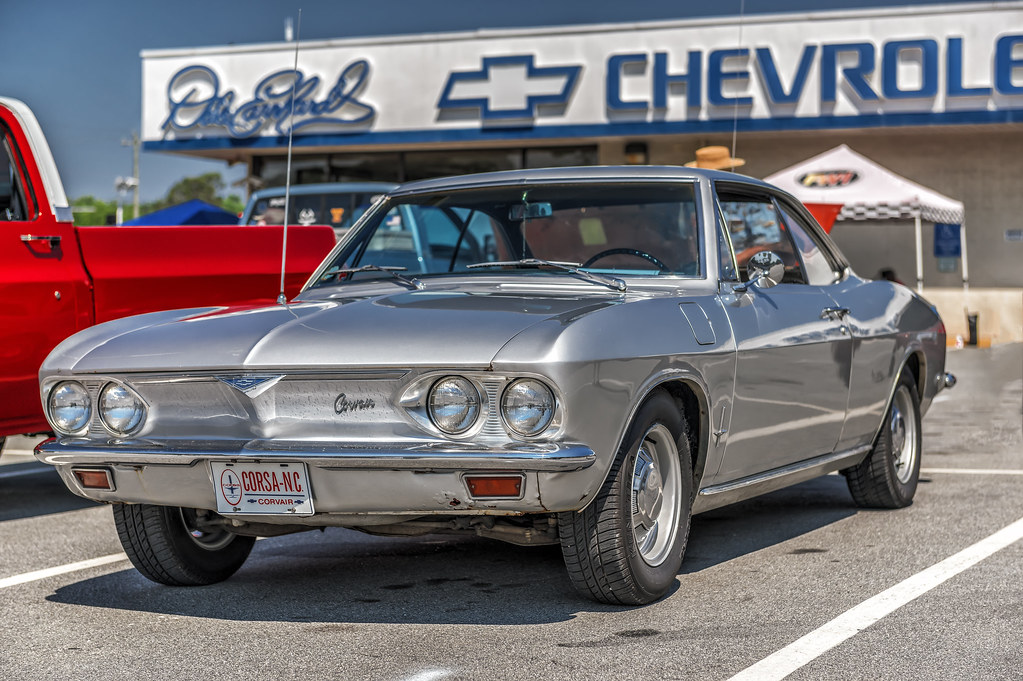
We have all been there. You are heading out and as you pull out of the driveway, there is a dark spot that you are sure wasn’t there when you parked. An oil leak. Now you have to decide whether or not your car leaking oil is a huge sign of trouble for your vehicle or if it’s just another of those things that happen to old cars. This unsettling discovery immediately raises questions about the severity and potential consequences for your cherished ride.
Indeed, all kinds of oil leaks can be potentially dangerous, so yes, you should be concerned if you notice your car dripping engine oil. However, this isn’t necessarily a reason to panic at the sight of dark oil spots on the ground. What should matter the most now is the level of oil left in your car and how bad the leak is, so always check for those indicators first. What might seem like a few drops of oil can quickly grow into larger leaks and cause problems that may be far more expensive to repair down the line.
Oil leaks certainly never get better with time; they only get worse. While topping up the oil might offer a temporary fix to finish your trip, it is crucial to address the root cause of the leak promptly. The worst types of leaks are those that go unnoticed and leave your vehicle running on dangerously low levels of engine oil. This is why regular oil level checks are paramount, especially for classic or older performance cars that may not have a low-level warning light. This article will dissect the most common culprits, focusing on the inevitable wear and tear that can transform a once-thrilling performance machine into an unfortunate oil-leaking dilemma as it enters its second decade.

1. **Worn-Out Seals and Gaskets**Seals and gaskets play a crucial role in keeping your car’s engine oil contained and directing it precisely where it needs to go. These vital components are meticulously designed to create a tight, impermeable seal between key engine parts, effectively preventing oil from escaping as it circulates through the various systems of your vehicle. Their integrity is fundamental to maintaining proper lubrication and preventing catastrophic fluid loss.
However, over time, these essential seals and gaskets inevitably wear out due to constant exposure to extreme heat, immense pressure, and continuous engine vibrations. This relentless wear and tear can lead to a host of issues, including the development of cracks, splits, or the hardening of their surfaces, which ultimately compromises their ability to maintain that critical, proper seal. As these materials degrade, their effectiveness diminishes significantly.
When this degradation occurs, oil can readily seep through the newly formed gaps, often resulting in noticeable and increasingly frequent leaks. This general deterioration of sealing components is a primary reason for the prevalence of oil leaks in older cars. As the context explains, “Gaskets play a crucial role in our engines. They act like barriers, ensuring oil doesn’t escape. But as cars age, these gaskets are weakened. When they aren’t as strong, they allow oil to slip out.”
Extending this principle to seals, the context further emphasizes that “Seals are equally important as gaskets. Their job is to keep the oil inside. Over time, these seals can wear down. Oil can leak if they’re not holding tight.” This highlights the cumulative effect of aging components on the entire sealing system, making worn-out seals and gaskets a top suspect for any suspicious oil puddles under your vehicle.
Read more about: Your Engine Stalls? 14 Smart Fixes & Diagnostic ‘Tricks’ to Conquer Car Stalling, Starting Outside the Hood
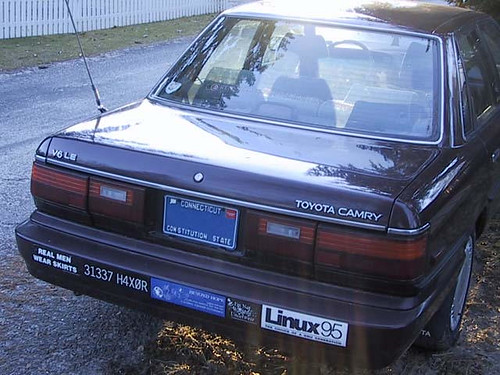
2. **Loose or Damaged Oil Filter**A loose or damaged oil filter stands as a major cause of oil leaks, particularly in vehicles that have undergone numerous oil changes. When the oil filter is not securely fastened, it fails to create a tight, impenetrable seal against the engine block. This critical connection is designed to prevent oil from escaping as it flows through the filter, ensuring the lubricant remains within its designated pathways.
Should this seal be compromised, even by a tiny margin, oil can readily seep out and drip from the filter housing, leaving visible puddles beneath your car. The context rightly points out, “It is easy to see why these spots are an easy target for leaks. Removing and reattaching the components frequently increases the possibility of leaks, especially in old cars where both parts have undergone long-term use.” The repetitive stress on these parts often leads to their eventual failure.
Beyond improper installation, the physical condition of the oil filter itself can be a significant factor. A damaged oil filter can develop cracks or lose its structural integrity over time, particularly if it’s an older unit or one made from subpar materials. These structural flaws create vulnerable spots where oil can easily escape during the filtering process, bypassing the filter’s intended containment and causing a leak.
It is also critical to consider that an incorrectly installed oil filter, even if seemingly tight, can cause an engine oil leak. The internal engine pressure can further aggravate such leaks if the oil filter isn’t seated correctly, transforming a minor oversight into a significant problem. Therefore, it is always wise to “check if the oil filter is loose or displaced, especially if you notice an oil leak after a recent oil change.”
Read more about: Don’t Let Your Diesel Go BOOM! Decoding the 10 Turbocharger Time Bombs Threatening High-Mileage Engines
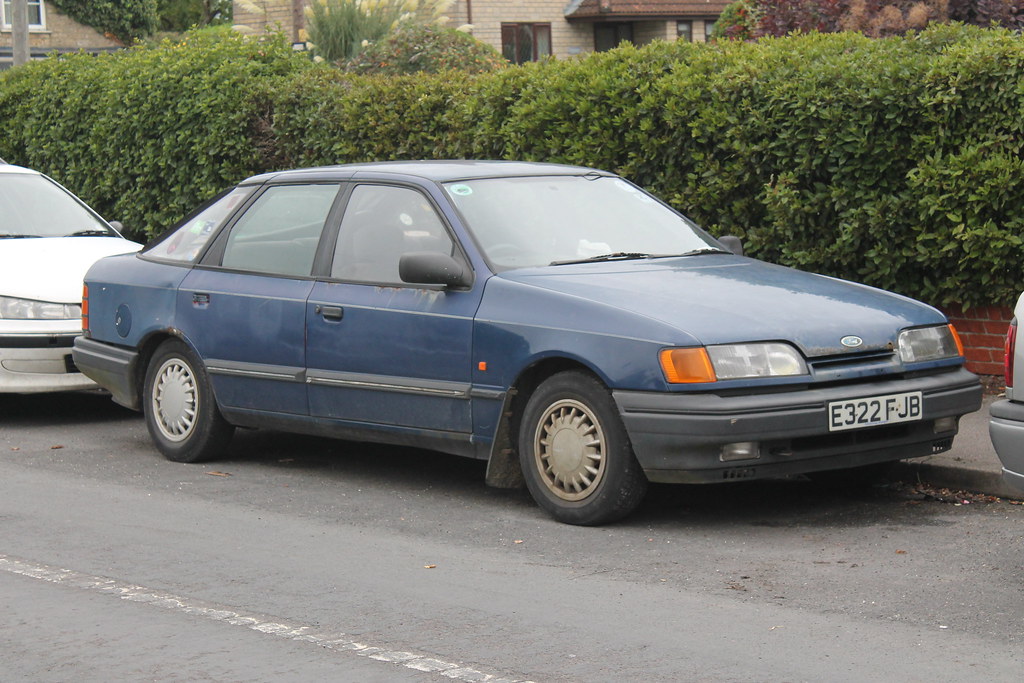
3. **Cracked or Damaged Oil Pan**The oil pan serves as a critical component in your car’s engine, fundamentally acting as a reservoir that stores the essential oil needed for proper lubrication and cooling of internal engine parts. When the oil pan is in perfect, undamaged condition, it effectively contains this vital oil, preventing any escape and ensuring the engine has a consistent supply of lubricant. Its integrity is absolutely crucial for the health of your engine.
However, a crack in the oil pan can severely compromise this functionality, creating an immediate pathway for oil to leak out. These cracks often develop due to external factors, making the oil pan particularly vulnerable. Common culprits include impacts from road debris hitting the pan, or damage incurred from driving over potholes, speed bumps, or curbs too aggressively. Over time, even minor impacts can weaken the pan’s structure.
As these issues accumulate and the pan ages, they can create small fractures or even larger openings where oil can seep through, often at an alarming rate. “Typically, a cracked oil pan will result in a significant leak, leaving puddles of oil under your vehicle,” as the context highlights. This type of leak is usually noticeable due to the volume of oil lost.
The inherent vulnerability of the oil pan is largely due to its placement. “Since the oil pan sits underneath your vehicle, it can easily get damaged due to road debris or hitting a speed bump.” This exposed position makes it highly susceptible to external forces, especially in older cars that have endured many years and miles of varied road conditions, increasing the likelihood of structural damage and subsequent leaks.
Read more about: Don’t Let Your Diesel Go BOOM! Decoding the 10 Turbocharger Time Bombs Threatening High-Mileage Engines
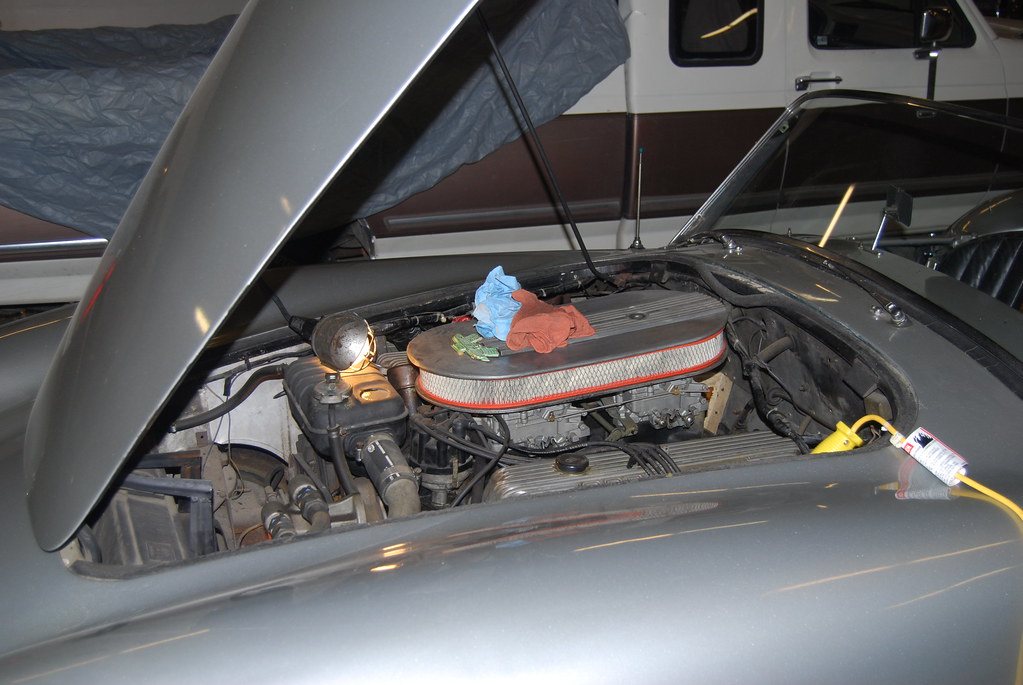
4. **Loose Drain Plug**The oil drain plug plays a truly vital role in sealing the oil pan and effectively keeping engine oil contained within the system. Its primary function is to provide a secure, temporary closure for the oil pan, allowing for easy drainage during oil changes while preventing leaks during normal operation. However, if this seemingly simple component becomes loose, it immediately compromises the seal, allowing oil to escape.
A loose plug can stem from a few common scenarios. Most frequently, it results from improper installation, such as not tightening it sufficiently after an oil change, an oversight that can have immediate consequences. Alternatively, the plug may gradually loosen over time due to persistent vibrations emanating from the engine during vehicle operation. Both scenarios lead to a compromised seal and potential leakage.
Beyond improper tightening, wear and tear on the drain plug’s threads or its accompanying gasket can also significantly reduce its ability to form a secure seal. The threads can strip or become damaged, while the gasket can compress and harden, losing its elasticity. When the plug is not properly tightened or its components are degraded, “oil can drip from the bottom of the oil pan, leading to reduced oil levels and potential engine damage if left unchecked.”
It’s also important to consider the opposing problem to a loose plug: overtightening. The context warns, “A loose oil drain plug is a common reason for a car oil leak, but it’s likely to happen if you’ve fastened it by hand.” Conversely, “over-tightening the oil drain plug could damage the threads, eventually causing an oil leak.” This emphasizes the delicate balance required during installation to prevent issues at either extreme.
Read more about: Investor Alert: Unmasking the 15 High-Mileage Maintenance Traps That Can Sink Your Savings
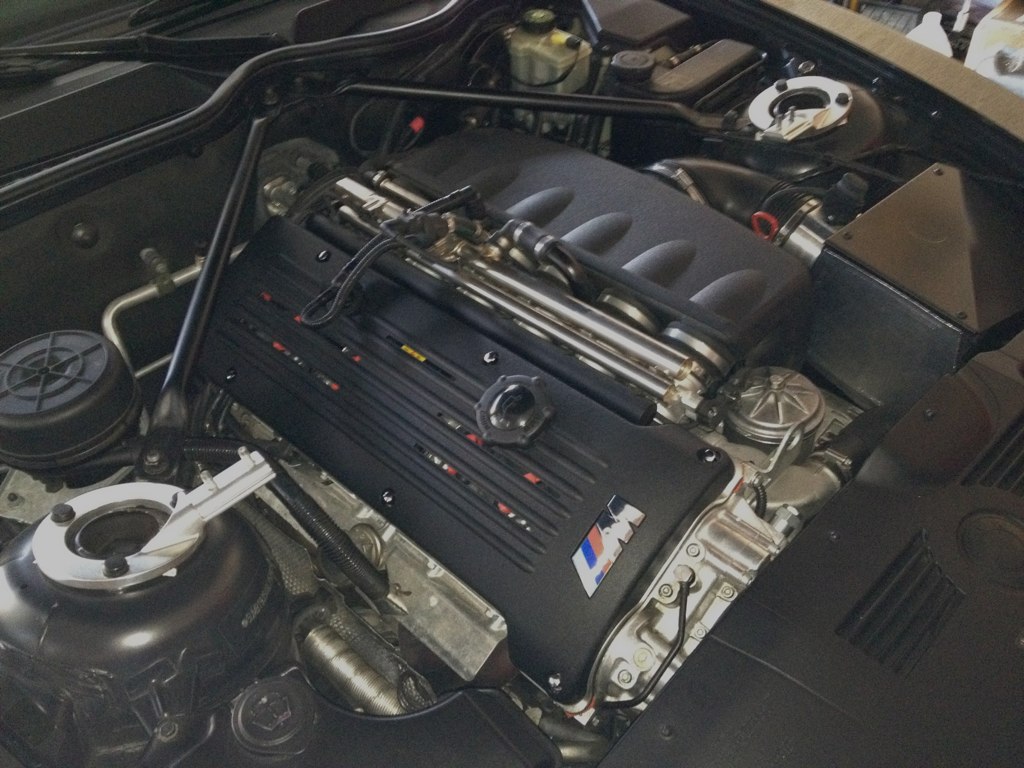
5. **Faulty Valve Cover Gasket**The valve cover gasket is a specific component “often associated with oil leaks from the top of the engine.” This is due to its precise location; “That is where the gasket is located and it acts as a seal between the cylinder head and the valve cover.” Its critical function is to prevent oil from escaping the top of the engine while simultaneously protecting the internal valve train components from external contaminants and debris.
As with many other seals and gaskets throughout the engine, “the valve cover gasket can also wear out and cause oil leaks.” This component is integral to the engine’s valve cover, providing a sealed environment for the cylinder head. It meticulously prevents oil from escaping from the engine’s upper regions, while also safeguarding the delicate mechanisms beneath the cover.
However, if this gasket becomes worn or damaged, it inevitably fails to maintain a proper seal, directly leading to noticeable oil leaks. Over time, the relentless exposure to the engine’s heat and pressure, coupled with continuous vibrations, can cause the gasket material to become brittle or crack. This structural degradation allows oil to seep out, often pooling around the edges of the valve cover.
The aging process of a vehicle directly impacts the integrity of this gasket. As the context points out, “Since your car is old, its ability to seal off the oil might have reduced, leaving the valve cover gasket covered in oil.” This makes a faulty valve cover gasket a very common culprit in older performance cars, manifesting as oil accumulation around the engine’s upper sections.
Read more about: Spilling the Gas: Unmasking 12 Critical Engine Failure Points That Allegedly Emerge Right After Your Warranty Ends

6. **Crankshaft Seals (Front and Rear)**The crankshaft, a vital component of your engine, features ends that protrude slightly from the engine block, facilitating the mounting of the flexplate or harmonic balancer. To prevent oil from escaping these crucial points, a specialized seal is situated at each end. However, these crankshaft seals can occasionally be problematic; sometimes, “the crankshaft seal might be too small and oil starts to accumulate on the underside.”
When a front crankshaft seal begins to leak, it often manifests visibly. You might readily “notice the oil in front of the engine if the leak is severe,” leaving tell-tale signs on components like the timing cover. This area is a frequent source of issues, as “the front crankshaft is often a problem area because as the oil seals age, they can crack and cause a leak.” The constant rotation and thermal cycling take their toll.
Much like other critical seals throughout the powertrain, such as the timing cover gasket, your vehicle is equipped with various oil seals including the camshaft and crankshaft seals. Their fundamental role is to meticulously keep the engine oil contained, preventing it from spilling out. However, with the passage of time and accumulation of mileage, these seals can inevitably dry out, crack, or suffer damage, directly leading to a motor oil leak.
Addressing oil leaks originating from the rear engine seals presents a distinct challenge, as the specific repair procedure is often dependent on the particular type of seals your car employs. When these seals are being reinstalled, it is a critical step to “grease the seal before reinstalling it, and ensure its angled edge is facing inward.” This attention to detail is paramount for a lasting, effective repair.
Given their location and the intricate nature of the engine components they protect, diagnosing a camshaft or crankshaft seal leak can be quite tricky. For this reason, the context offers sound advice: “Diagnosing a camshaft or crankshaft seal leak is tricky, so it’s best to get professional help.” A skilled mechanic can accurately pinpoint the source and recommend the most effective course of action, saving you potential headaches and further damage. This is particularly relevant for older vehicles where multiple potential leak sources might complicate a DIY diagnosis.”
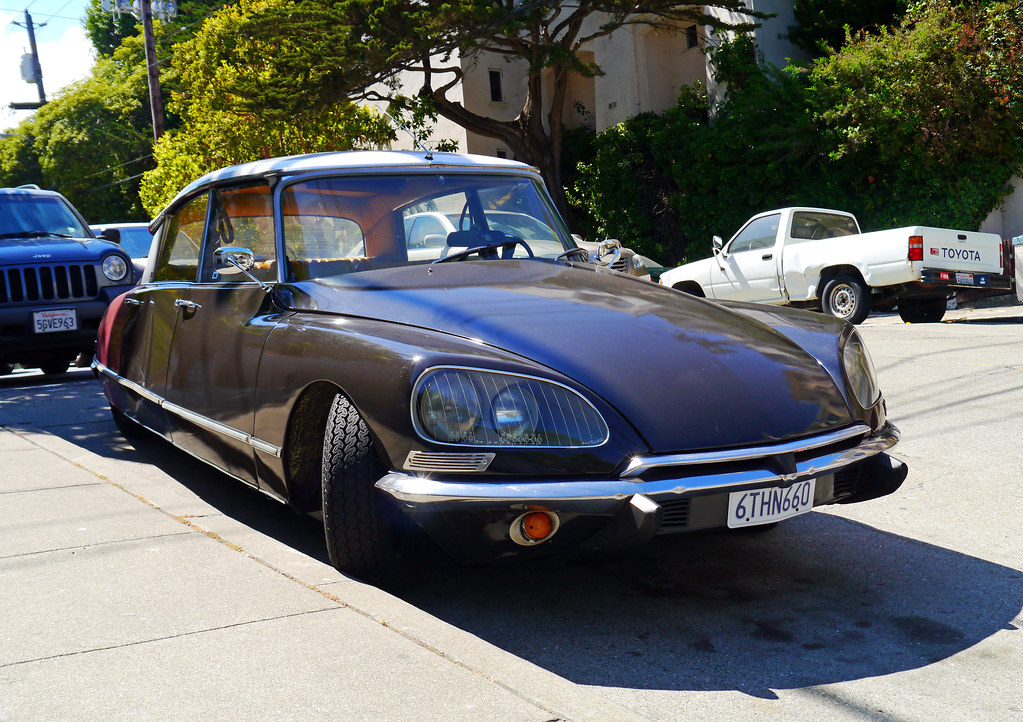
7. **Timing Cover Seal**The timing cover seal is another often-overlooked yet critical component prone to oil leaks in older performance vehicles. Positioned between the engine block and the timing cover, this seal plays a crucial role in safeguarding the timing belt or chain, which orchestrates the engine’s precise internal movements. Its primary function is to ensure that engine oil remains securely contained within the timing cover, preventing any escape that could compromise the timing mechanism or lead to external leaks.
However, like many components subjected to constant engine operation, this seal is highly susceptible to wear and tear. Prolonged exposure to fluctuating temperatures, engine vibrations, and continuous oil contact inevitably causes the timing cover seal to degrade. Over many years and accumulated mileage, the material can harden, crack, or lose its elasticity, thereby compromising its ability to form a perfect, impermeable barrier against the oil. This gradual deterioration often leads to the insidious onset of a slow, yet persistent, oil leak.
When the timing cover seal fails, oil begins to seep out, typically becoming visible around the front of the engine, near the harmonic balancer or crankshaft pulley. The context explains that “this seal can wear out with prolonged use. When this happens, oil begins to escape.” It is important for owners of high-mileage sports cars to regularly inspect this area for any signs of oily residue, as an early detection can prevent more significant problems down the line.
In some instances, the timing cover itself, rather than just the seal, might be the root cause of the leak, suffering from corrosion or warping that compromises the seal’s effectiveness. The context advises, “In some cases, the timing cover itself rather than the seal is what gets weakened. You’ll have to inspect the car to know which of the two parts will need replacing.” A thorough inspection is paramount to accurately diagnose whether it’s the seal, the cover, or both, requiring attention for a lasting repair. Addressing this leak often involves accessing this front-mounted engine component, which can be labor-intensive depending on the vehicle’s design.
Read more about: Investor Alert: Unmasking the 15 High-Mileage Maintenance Traps That Can Sink Your Savings
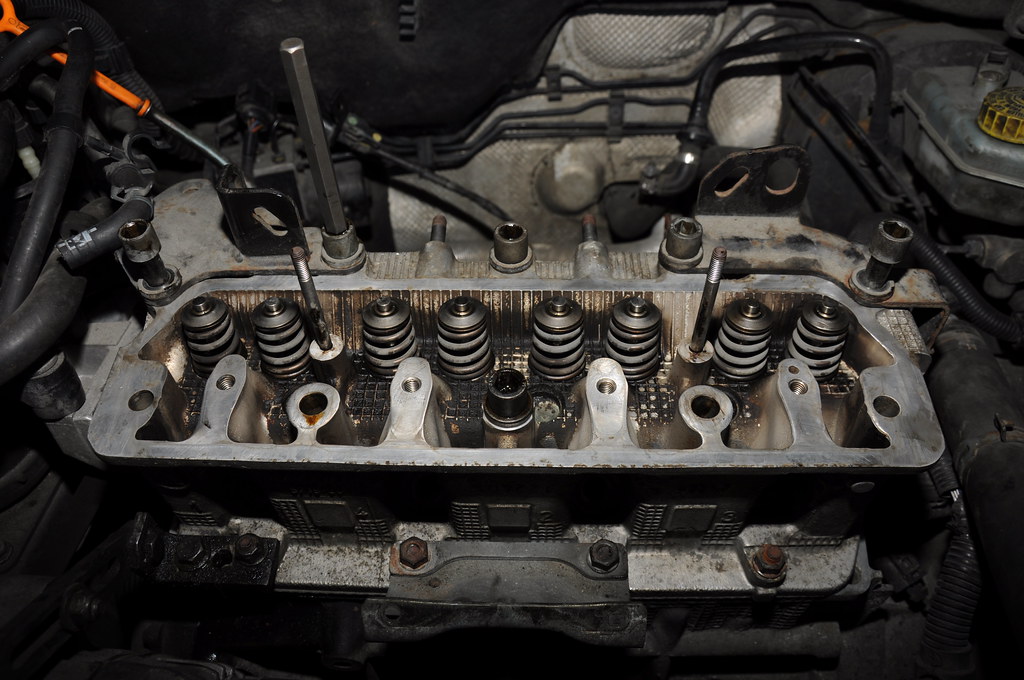
8. **Cylinder Head Gasket**While head gaskets are frequently associated with internal issues like coolant mixing with oil, they can also become a significant external source of engine oil leaks, particularly in aging performance cars. This vital gasket is situated between the engine block and the cylinder head, forming a critical seal that separates the combustion chambers, coolant passages, and oil galleries. Its integrity is fundamental to maintaining proper engine compression and preventing inter-fluid contamination.
Over the decades, the immense pressures, extreme temperatures, and constant expansion and contraction cycles that the engine undergoes can gradually compromise the head gasket’s material. This relentless stress can lead to erosion, cracking, or deterioration, particularly along the outer edges where oil galleries are located. When the head gasket’s outer seal fails, engine oil can begin to seep externally, manifesting as a noticeable leak along the seam of the engine block and cylinder head.
The context mentions that “Head gaskets are mostly associated with internal leaks but they can also cause engine oil to drip externally.” This external manifestation is often a clearer visual indicator to the owner, unlike internal leaks which might only be detected by performance issues or fluid analysis. For owners of classic cars, especially those with “flat engines,” this area warrants particular attention.
If your classic car employs a flat engine design, often characterized by horizontally opposed cylinders, “this might be one of the first places you want to check when experiencing a leak.” The specific architecture of such engines can sometimes make the head gasket a more vulnerable point for external oil egress, making regular visual inspections of this engine junction essential for proactive maintenance and early detection of potential issues. Timely repair is crucial to prevent both further oil loss and the eventual development of more catastrophic internal engine damage.
Read more about: Investor Alert: Unmasking the 15 High-Mileage Maintenance Traps That Can Sink Your Savings
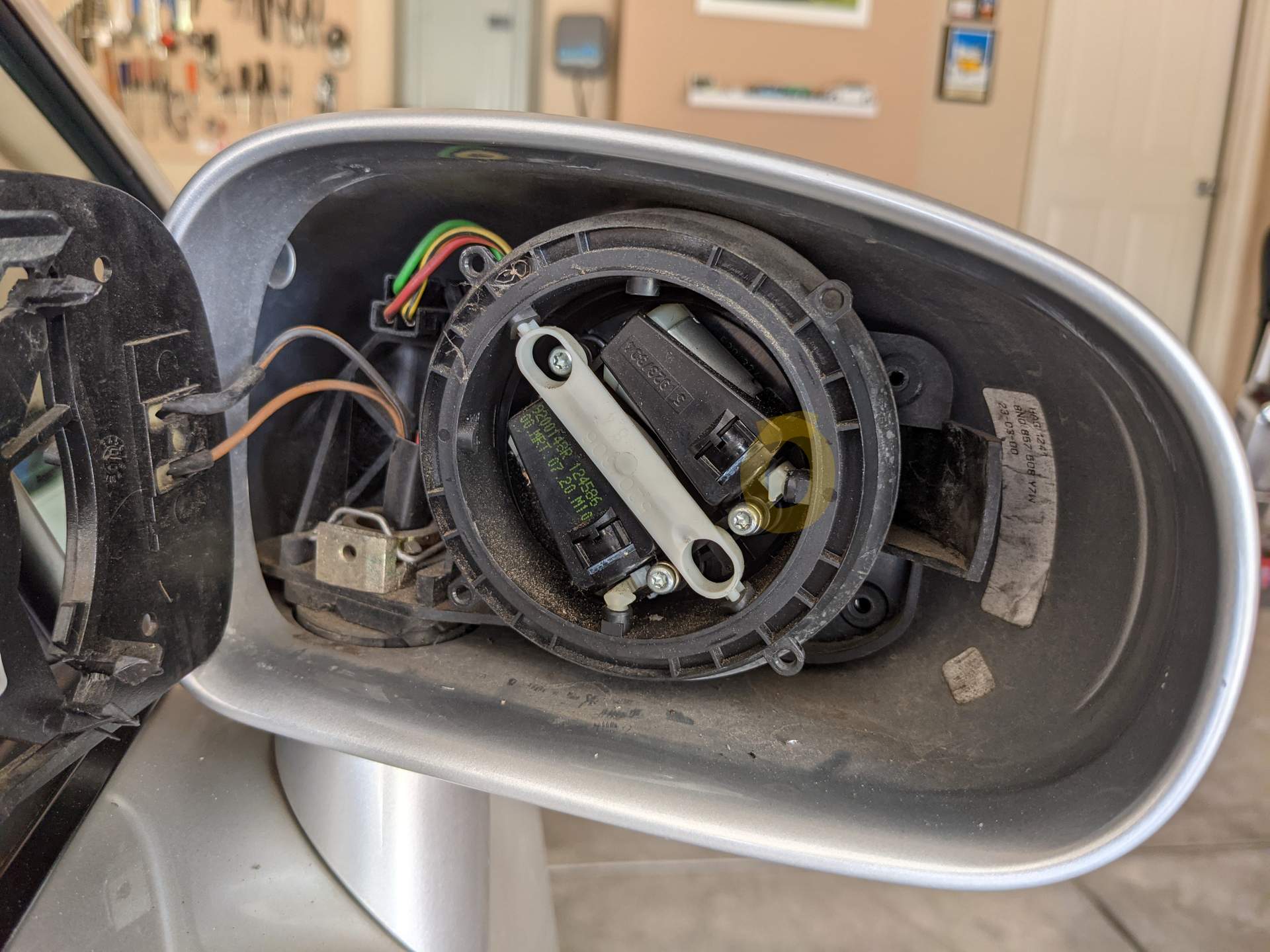
9. **Oil Filter Adapter Housing Seal**Beyond the oil filter itself, the often-overlooked oil filter adapter housing seal can be a stealthy source of persistent leaks in older vehicles. This component, often featuring a gasket behind it, provides the mounting point where the oil filter connects to the engine block. It ensures a sealed pathway for oil flow, directing it through the filter and back into the engine without spillage. Its integrity is just as crucial as the oil filter’s seal, yet it frequently receives less attention.
Over years of service, the gasket or seal within this adapter housing is subjected to continuous oil pressure, engine heat, and vibrations. These harsh conditions inevitably lead to material fatigue, causing the seal to harden, crack, or lose its original elasticity. Once compromised, even slightly, this seal creates a vulnerable point where engine oil can steadily seep out, often mimicking a leak directly from the oil filter, making diagnosis tricky.
The context specifically highlights this issue: “The adapter housing your oil filter connects to might have a gasket behind it that can become faulty.” This faultiness arises from the natural degradation of the sealing material, which can no longer maintain the tight barrier required to contain the circulating engine oil. Such a leak can be particularly frustrating as replacing the oil filter itself might not resolve the underlying issue if the adapter housing seal is the true culprit.
Furthermore, vehicles utilizing “cartridge filters can also leak from the oil filter housing seal,” indicating that this problem is not exclusive to spin-on filter designs. This broad applicability means that a wide range of older sports cars can develop leaks from this specific point. Identifying this leak often requires careful inspection around the oil filter mounting area, looking for fresh oil residue originating specifically from behind the adapter housing, distinguishing it from a simple loose filter. Repair typically involves removing the adapter and replacing the aged gasket or seal, a task that requires careful attention to torque specifications for a lasting fix.
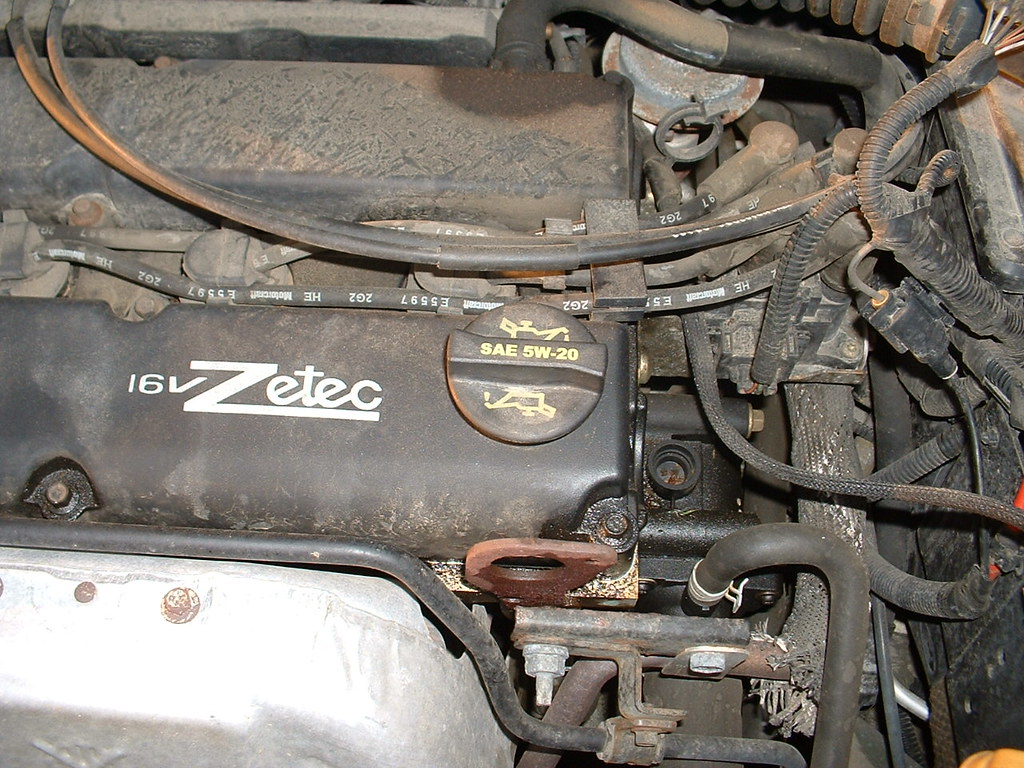
10. **Broken Oil Filler Cap**Sometimes, the simplest components can lead to the most noticeable leaks, and the oil filler cap is a prime example of this often-underestimated culprit. This cap, designed to provide a secure seal for the engine’s oil tank, prevents vital lubricants from escaping through the top of the engine. Its function is straightforward: to allow for easy oil replenishment while maintaining a tight closure during operation.
However, the oil filler cap is frequently removed and reinstalled, exposing it to consistent handling and potential wear. Over time, the internal rubber gasket or the plastic cap itself can degrade, crack, or simply lose its ability to create a snug fit. This degradation is often accelerated by exposure to engine heat and oil vapors, making the cap brittle or its seal less pliable, leading to a compromised closure.
The context notes that “The filler cap of a car’s oil tank often gets loose or breaks due to wear from constant removal and reinstallation.” When this happens, it is not uncommon to “notice oil puddles under your vehicle,” particularly after the engine has been running and oil has splashed or seeped out from the top. A distinct indicator of this specific issue is often a “lit check engine light” on the dashboard, which can be triggered by vacuum leaks or improper crankcase ventilation resulting from a faulty cap.
Addressing a broken or loose oil filler cap is one of the more straightforward and least expensive oil leak repairs. The solution is typically as simple as tightening the cap if it’s merely loose, or replacing it with a new one if the cap or its internal seal is visibly damaged or worn. The context clearly advises, “You should either tighten or replace the oil filler cap.” This quick fix can prevent ongoing oil loss and help extinguish that bothersome check engine light, keeping your classic performance car running as intended.
Read more about: Beyond Warp Core Breaches: 15 Sci-Fi Tropes and Concepts That Are Seriously Struggling to Make Sense Anymore
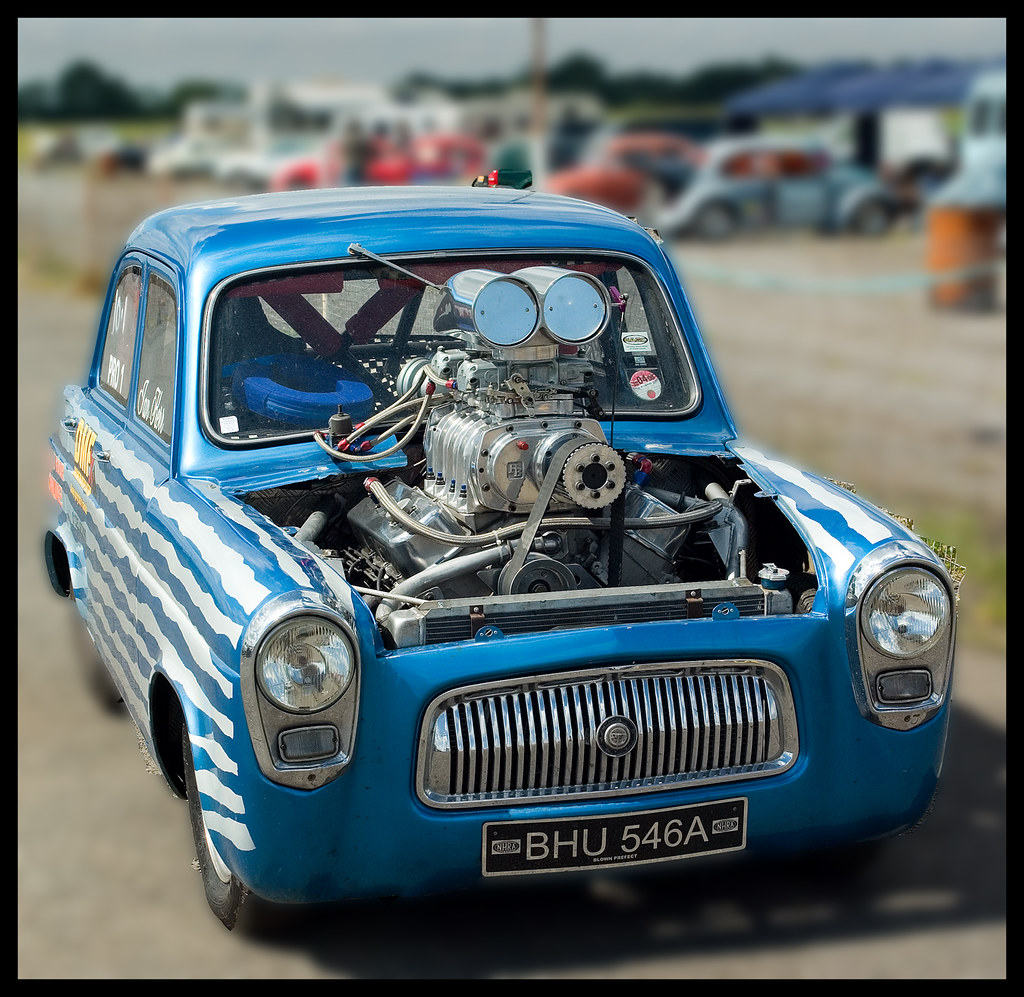
11. **Excess Oil in Your Engine**While component failure is a common theme, sometimes an oil “leak” is actually a result of human error – specifically, overfilling the engine with oil. The engine’s lubrication system is meticulously engineered to operate with a precise volume of oil. Introducing more oil than the manufacturer’s specified capacity can create an overpressure scenario within the crankcase, forcing the excess lubricant out through the weakest points in the sealing system.
When an engine is overfilled, the crankshaft, which rotates rapidly within the oil pan, can agitate the excess oil, turning it into a frothy mixture. This increased volume and aeration significantly raise the internal pressure. This elevated pressure then seeks an escape route, often pushing past seals and gaskets that would otherwise hold tight under normal operating conditions. Common points of egress include the crankshaft seals, valve cover gaskets, or even the oil pan gasket, manifesting as unexpected drips.
The context describes this scenario by stating, “If you notice oil leaking from your car, it can be due to an overflow of excess oil or a spill during an oil change.” It’s a critical distinction to make, as it points to an operational oversight rather than a part failure. A tell-tale sign of overfilling is that “you’ll notice an oil puddle under your car, but the engine oil light on your dashboard won’t light up,” primarily because the engine’s oil pressure is technically sufficient, albeit excessive.
Correcting an overfill situation is crucial not only to stop the “leak” but also to prevent potential engine damage. Excess oil can cause foaming, which reduces the lubricating properties and can lead to hydraulic lock or excessive resistance on moving parts. The immediate remedy involves carefully draining the excess oil until the level on the dipstick falls within the manufacturer’s recommended range. This ensures the engine operates under optimal conditions, preventing unnecessary stress on seals and gaskets and preserving the long-term health of your high-performance machine.
Read more about: Investor Alert: Unmasking the 15 High-Mileage Maintenance Traps That Can Sink Your Savings
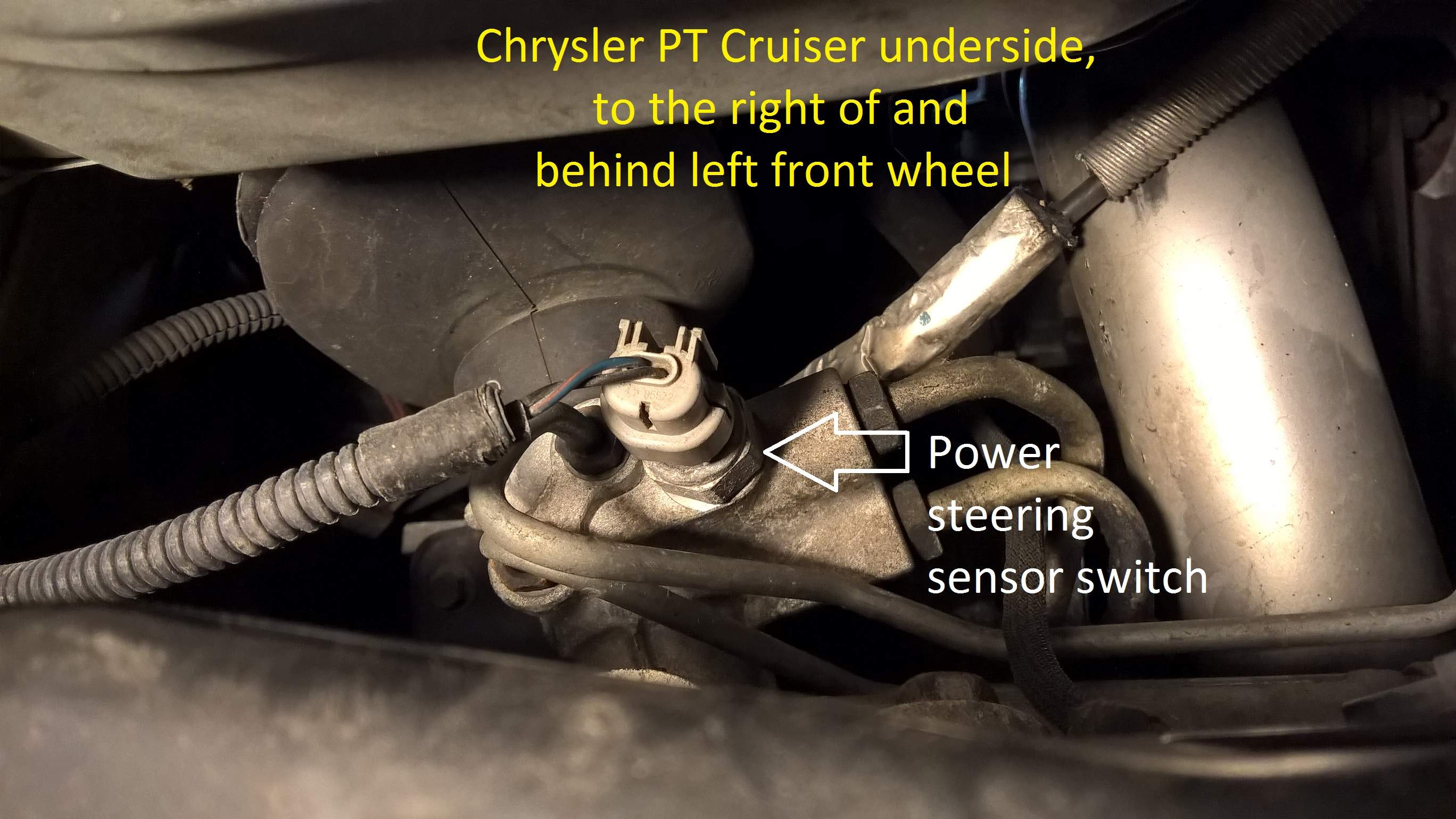
12. **Cracked Oil Pressure Sensor**The oil pressure sensor, though small in stature, plays a vital role in monitoring the health of your engine’s lubrication system and can become an unexpected source of oil leaks in older vehicles. This sensor is strategically positioned within the engine, typically in the cylinder head or engine block, where it can accurately measure the oil pressure and relay this critical information to the vehicle’s onboard computer and the dashboard warning light.
Over many years and countless operating cycles, this sensor, like any other engine component, is exposed to constant vibrations, heat, and oil pressure fluctuations. Its construction, often involving plastic or metal housing with electrical connections, can degrade under these conditions. This degradation can lead to the development of hairline cracks in the sensor’s body or a failure of the seal where it threads into the engine block, creating a pathway for oil to escape.
The provided context explicitly states that “The oil pressure sensor, located in the cylinder head or engine block, can sometimes crack due to engi” (the sentence is truncated, but the implication of cracking and leaking is clear). A crack in the sensor body or a failure of its sealing washer will allow pressurized engine oil to seep out, often manifesting as a slow drip that can accumulate around the sensor’s location or run down the side of the engine block. This can be particularly deceptive, as the leak might appear to originate from another component further up the engine.
Diagnosing a cracked oil pressure sensor involves a careful visual inspection of the sensor itself and the surrounding area for any signs of fresh oil residue. Given its sometimes awkward location, proper access might require some mechanical dexterity. Replacing a faulty oil pressure sensor is generally a straightforward repair, involving unthreading the old unit and screwing in a new one, ensuring the correct torque and a fresh sealing washer are used. This small fix can prevent continuous oil loss and ensure your engine’s vital lubrication monitoring system functions correctly, providing peace of mind for your prized sports car.
Read more about: Don’t Let Your Diesel Go BOOM! Decoding the 10 Turbocharger Time Bombs Threatening High-Mileage Engines
As we’ve journeyed through the intricate landscape of potential oil leak sources in cherished older sports cars, it becomes abundantly clear that these vehicles, while embodying engineering marvels, demand vigilant attention as they age. From the often-overlooked timing cover seal to the critical cylinder head gasket, and even simple components like the oil filler cap or the oil pressure sensor, each presents a unique challenge for the discerning owner. Understanding these common failure points, recognizing the signs, and taking proactive steps—whether it’s regular maintenance, a precise repair, or simply avoiding an oil overfill—are paramount to preserving the performance and extending the lifespan of these automotive icons. Remember, a small drip today can escalate into a major headache tomorrow, potentially turning your beloved machine into an oil-leaking disaster. So, equip yourself with this knowledge, stay vigilant, and ensure your classic sports car continues to run as powerfully and reliably as the day it first roared to life, leaving only tire tracks, not oil stains, in its wake.



